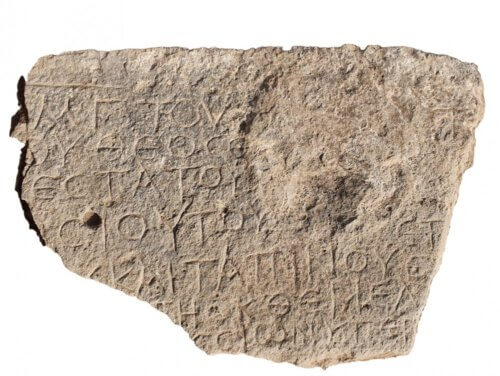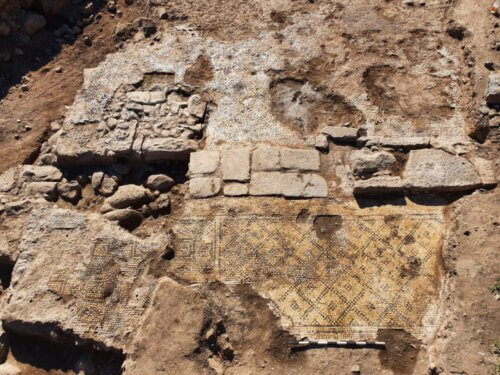In the excavation of the Antiquities Authority in the village of Tayba in the Jezreel Valley, an inscription was recently found dedicating to Jesus, the son of Mary. The inscription belonged to a church door frame in the Byzantine period (late 5th century AD)


In the excavation of the Antiquities Authority in the village of Tayba in the Jezreel Valley, an inscription was recently found dedicating to Jesus, the son of Mary. The inscription belonged to a church door frame in the Byzantine period (late 5th century AD) and was engraved in Greek on a stone. It was found incorporated in reuse, in one of the walls of a magnificent building dating from the Byzantine or early Arab period, from which two rooms with a mosaic floor with geometric decoration were revealed. The inscription was discovered during an archaeological excavation conducted by Tzahi Lang and Kojan Hacho from the Antiquities Authority, before the construction of an internal road in the settlement. As part of the Antiquities Authority's policy to bring the public closer to archeology, trainees from the pre-military preparatory schools Harduf and Hanton, students from the "Democratic in the Valley" school, as well as volunteers and workers from the local community, participated in the excavation.
Dr. Leah Di-Sagni, an expert on ancient Greek inscriptions from the Institute of Archeology at the Hebrew University of Jerusalem, who deciphered the inscription, said that "the phrase 'Christ born of Mary' was intended to protect the readers from the evil eye, and it was common at the beginning of inscriptions and documents of the period. 'Christos' - translated from Greek - 'Messiah', was Jesus' nickname." Di-Sagni added that the inscription greets those who come to the gates of the place and blesses them, which indicates that it was originally placed on a church and not a monastery. "While the church blessed the entry of believers through its gates, the monasteries refrained from doing so," she noted.
Theodosius, mentioned in the inscription as being responsible for the foundation of the structure, was one of the first bishops in Christianity. He served as the regional archbishop, which is the supreme religious authority of Metropolitan Beit Shean, which Teiba in the valley belonged to. Dr. Walid Atrash from the Antiquities Authority said that "this is the first evidence of a church from the Byzantine period in Tayba, which joins other evidence of the activity of Christian residents in the area. In the past, remains of a church from the Crusader period were uncovered there, and recently a monastery from the same series of monasteries subordinate to the Metropolitan of Beit Shean was discovered there.
More of the topic in Hayadan:
